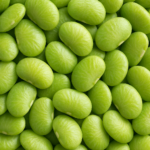
Welcome to the delightful world of beignets, those irresistible pillows of dough that have captured the hearts and taste buds of people around the globe! Originating from France and finding a beloved home in New Orleans, beignets are much more than just a sweet treat; they are steeped in history, culture, and culinary artistry. Whether you’ve enjoyed them at a bustling café or have yet to experience their sugary goodness, this blog will take you on a journey through 25 fascinating facts about beignets. From their historical roots to their modern-day variations, prepare to discover the stories, traditions, and unique characteristics that make beignets a cherished delicacy. So, grab a cup of coffee, dust off some powdered sugar, and let’s dive into the sweet history and cultural significance of these delectable pastries!
Beignets are a type of French pastry, often referred to as “French doughnuts.” Beignets are a beloved pastry originating from France, characterized by their fluffy, airy texture and sweet flavor. They are often compared to doughnuts due to their deep-fried nature, but unlike traditional doughnuts, which are typically ring-shaped, beignets are usually square or rectangular. Their versatility allows for variations in preparation and presentation, making them a delightful treat enjoyed by many.
They are typically made from a deep-fried choux pastry or a yeast dough. The dough for beignets can be prepared using two primary methods: choux pastry or yeast dough. Choux pastry is made from a mixture of water, butter, flour, and eggs, resulting in a light and airy texture. On the other hand, yeast dough is similar to that used for bread, incorporating yeast as a leavening agent, which allows the dough to rise and develop a fluffy interior. Both methods yield delicious results, but yeast dough is more commonly used in New Orleans-style beignets.
The word “beignet” translates to “fried” in English. The term “beignet” comes from the French language, where it literally means “fried.” This name reflects the cooking method used to prepare these pastries. The frying process gives beignets their signature golden-brown exterior and contributes to their light and airy texture. This simple yet descriptive name encapsulates the essence of the pastry and its preparation.
Beignets are commonly associated with New Orleans cuisine. While beignets have their roots in French culinary tradition, they have become a quintessential part of New Orleans cuisine. The city’s unique cultural blend of French, African, Spanish, and Creole influences has shaped its culinary landscape, and beignets stand out as a beloved treat. Visitors to New Orleans often seek out beignets, especially at iconic establishments like Café du Monde, where they are served alongside rich, flavorful coffee.
Café du Monde, established in 1862, is famous for its beignets and café au lait. Café du Monde is a historic coffee shop located in the French Quarter of New Orleans, renowned for its beignets and café au lait. Founded in 1862, the café has become an iconic destination for both locals and tourists. The beignets served here are made fresh to order, and patrons often enjoy them with a cup of café au lait, a blend of coffee and steamed milk. The café’s outdoor seating and vibrant atmosphere make it a popular spot for those seeking to indulge in this classic New Orleans treat.
Beignets are often served hot and dusted with powdered sugar. One of the defining features of beignets is their serving style. They are typically served hot and generously dusted with powdered sugar, creating a delightful contrast between the warm, fluffy pastry and the sweet, snowy topping. The powdered sugar not only enhances the flavor but also adds a visual appeal, making beignets an inviting treat. However, this generous dusting can lead to a bit of a mess, as the sugar tends to scatter when bitten into, adding to the fun of enjoying this indulgent pastry.
The dough for beignets can be prepared in advance and stored in the refrigerator. One of the advantages of making beignets is the flexibility in preparing the dough ahead of time. Home bakers can mix the dough and allow it to rise, then refrigerate it for several hours or even overnight. This allows for convenience, as the dough can be fried fresh when ready to serve. This method not only saves time but also enhances the flavors, as the dough develops a richer taste during the resting period.
In New Orleans, beignets are traditionally enjoyed for breakfast or as a dessert. Beignets hold a special place in the hearts of New Orleans residents, often enjoyed during breakfast or as a delightful dessert. Many locals start their day with a warm beignet paired with coffee, making it a comforting morning ritual. Additionally, their sweet flavor and light texture make them a perfect dessert option, allowing people to indulge in this treat at any time of the day.
The French version of beignets is often filled with fruit preserves or cream. While New Orleans-style beignets are typically unfilled, the French version often features various fillings, such as fruit preserves, pastry cream, or chocolate. These filled beignets, known as “beignets de fruits,” offer a delightful surprise with each bite, as the sweet filling complements the airy pastry. This variation showcases the versatility of beignets and their ability to adapt to different culinary traditions and preferences.
Beignets are a popular treat during the Mardi Gras season in New Orleans. During the festive Mardi Gras season, which culminates in Fat Tuesday, beignets become an especially popular treat in New Orleans. The vibrant celebrations, filled with parades, music, and revelry, create a perfect backdrop for indulging in these sweet pastries. Many locals and visitors alike flock to cafés and bakeries to enjoy beignets as part of the festivities. The connection between beignets and Mardi Gras highlights their role in the cultural and culinary traditions of New Orleans, making them a symbol of indulgence and celebration during this lively time of year.
The dough is usually left to rise for several hours before frying. In the preparation of beignets, allowing the dough to rise is a crucial step that contributes to their light and airy texture. Typically, the dough is mixed and then allowed to rest in a warm environment for several hours, usually around 1 to 2 hours, or until it has doubled in size. This fermentation process allows the yeast to work, creating bubbles of carbon dioxide that expand the dough. The longer the dough rises, the more flavor develops, resulting in a richer taste and a fluffier interior once fried.
Beignets are best consumed fresh, as they can become soggy over time. Beignets are at their best when served immediately after frying. The contrast between the hot, crispy exterior and the soft, warm interior is what makes them so delightful. However, as they cool, they can absorb moisture from the air, leading to a soggy texture that diminishes their appeal. For this reason, it’s recommended to enjoy beignets right after they are made, ensuring that they maintain their signature crispness and flavor.
The texture of beignets is light and airy on the inside, with a crispy exterior. One of the hallmarks of a well-made beignet is its unique texture. When fried properly, beignets develop a golden-brown, crispy crust that encases a soft, airy interior. This delightful contrast is achieved through the frying process, where the high heat causes the outer layer to crisp up quickly while the inside remains fluffy and tender. This texture is what makes beignets such a satisfying treat, as each bite offers a combination of crunch and softness.
Beignets can also be made with different flavorings, such as vanilla or cinnamon. While traditional beignets are often enjoyed plain or with powdered sugar, they can also be enhanced with various flavorings. Common additions include vanilla extract, which adds a subtle sweetness and aromatic quality to the dough, or cinnamon, which brings warmth and spice. These flavor variations allow for creativity in the kitchen, enabling bakers to experiment and create unique versions of beignets that cater to different palates and preferences.
The traditional New Orleans beignet is square-shaped, unlike the ring shape of typical doughnuts. Unlike many conventional doughnuts that are typically shaped in rings, traditional New Orleans beignets are cut into square or rectangular shapes before frying. This distinctive shape not only sets them apart visually but also allows for a greater surface area to absorb the hot oil, resulting in a crispy exterior. The square shape also makes it easy to serve multiple pieces at once, perfect for sharing among friends and family.
Beignets are often paired with coffee, especially chicory coffee in New Orleans. In New Orleans, it is customary to enjoy beignets alongside a cup of coffee, with chicory coffee being a popular choice. Chicory coffee is made by blending roasted chicory root with coffee beans, resulting in a rich, slightly bitter flavor that complements the sweetness of beignets. This pairing has become a beloved tradition, with many locals and visitors alike savoring the combination of hot coffee and warm beignets, creating a comforting and indulgent experience.
The popularity of beignets has spread beyond France and the U.S., with variations found in other countries. While beignets are closely associated with French and New Orleans cuisine, their popularity has transcended borders, leading to variations in other countries. For example, in the Caribbean, beignets are often made with sweet potato or banana, while in parts of Africa, similar fried pastries are enjoyed during celebrations. This global spread of beignets showcases their versatility and adaptability, as different cultures have embraced the concept of a fried pastry, creating unique interpretations that reflect local flavors and traditions.
In Vietnam, a similar pastry called “bánh tiêu” is popular, often served with sweetened condensed milk. In Vietnam, there is a pastry known as “bánh tiêu,” which bears similarities to beignets. These fried dough treats are typically light and airy, much like their French counterparts. Bánh tiêu is often served with sweetened condensed milk for dipping, adding a rich, creamy element that enhances the flavor. This connection between beignets and bánh tiêu highlights how different cultures have developed their own versions of fried pastries, each with unique characteristics and serving styles.
Dipping Sauces: Beignets, the delightful deep-fried pastries, are often enjoyed with a variety of dipping sauces to enhance their flavor profile. Common choices include rich chocolate sauce, which adds a decadent touch, and fruity sauces like raspberry or strawberry, which provide a refreshing contrast to the sweetness of the powdered sugar. These sauces not only complement the beignets’ soft, airy texture but also allow for a personalized eating experience, where individuals can choose their preferred flavor combinations.
Dough Variations: The dough used for making beignets can be crafted from either all-purpose flour or bread flour, each resulting in a distinct texture. All-purpose flour yields a lighter, more delicate beignet, while bread flour, with its higher protein content, creates a chewier texture that some prefer. This choice can significantly influence the final product, as the flour type affects the dough’s elasticity and the beignet’s overall mouthfeel after frying.
Special Occasions: Beignets are not just everyday treats; they are often associated with special occasions and celebrations. In New Orleans, for example, they are a traditional part of Mardi Gras festivities, symbolizing indulgence during the Carnival season. Their presence at parties, family gatherings, and festive events highlights their role as a beloved comfort food that brings people together to share in the joy of sweet indulgence.
Historical Origins: The origins of beignets can be traced back to France, with recipes dating as far back as the 16th century. Initially enjoyed as a simple fried dough treat, beignets have evolved over the centuries, adapting to local tastes and ingredients. Their journey from France to the vibrant culinary scene of New Orleans showcases the cultural exchange and adaptation that characterizes many traditional foods, making beignets a delicious example of historical culinary evolution.
Cultural Significance: Beignets hold a special place in the culinary landscape of many French-speaking regions, particularly in parts of Canada, such as Quebec, and the Caribbean. Their popularity in these areas reflects the influence of French cuisine on local food traditions. In New Orleans, beignets are particularly iconic, often served at Café du Monde, where they are enjoyed by both locals and tourists alike, cementing their status as a cultural symbol of the city’s rich culinary heritage.
Sugar Explosion: One of the most charming aspects of enjoying beignets is the generous dusting of powdered sugar that coats them. While this adds a delightful sweetness, it also leads to what is humorously referred to as a “sugar explosion.” As diners take a bite, the powdered sugar can easily scatter, creating a playful mess that adds to the experience. This phenomenon has become part of the beignet tradition, encouraging laughter and enjoyment, and highlighting the carefree nature of indulging in such a sweet treat.
Culinary Fusion: Beignets are a quintessential representation of the cultural blend between French and Creole influences in New Orleans cuisine. This fusion is evident in the way beignets are prepared and served, showcasing the rich culinary heritage of the region. The combination of French techniques with local ingredients and flavors has resulted in a unique pastry that not only satisfies the sweet tooth but also tells a story of cultural exchange and adaptation, making beignets a symbol of New Orleans’ diverse culinary identity.
FAQs About Beignets
1. What are beignets?
- Definition: Beignets are square-shaped, deep-fried pastries that originated in French cuisine. They are typically made from choux pastry, a light and airy dough.
- Key Characteristics:
- Shape: Square or rectangular
- Texture: Light, airy, and fluffy inside with a slightly crisp exterior.
- Flavor: Plain, often served with powdered sugar.
- Origin: While the origins of fried dough pastries are ancient, the specific form of the beignet is believed to have developed in French-speaking regions of Europe.
2. What is the difference between beignets and doughnuts?
- Shape: Beignets are typically square, while doughnuts are usually round.
- Dough: Beignet dough is often choux pastry, which is lighter and airier than typical doughnut dough.
- Flavoring: Beignets are traditionally plain and served with powdered sugar, while doughnuts come in a vast array of flavors (glazed, filled, etc.).
3. Where are beignets most popular?
- New Orleans: Beignets are a quintessential New Orleans treat, particularly famous at Cafe du Monde.
- French-speaking regions: Beignets have a long history in French cuisine and are enjoyed in various French-speaking parts of the world.
4. How are beignets traditionally served?
- Powdered Sugar: Heavily dusted with powdered sugar.
- Hot Coffee: Often enjoyed with a cup of hot coffee, especially cafe au lait (coffee with milk).
5. Can I make beignets at home?
- Yes: While making beignets requires some skill and attention to detail, it’s possible to make them at home.
- Tips for Home Cooking:
- Use a good quality oil with a high smoke point.
- Maintain the correct oil temperature.
- Be careful not to overcrowd the pan while frying.
- Dust generously with powdered sugar immediately after frying.
6. What are some variations of beignets?
- Filled Beignets: Some variations include fillings like fruit preserves, cream cheese, or chocolate.
- Savory Beignets: While less common, some versions incorporate savory ingredients.
7. Are beignets a healthy food?
- No: Due to the deep-frying process and the high amount of powdered sugar, beignets are considered an indulgence and not a healthy dietary choice.








